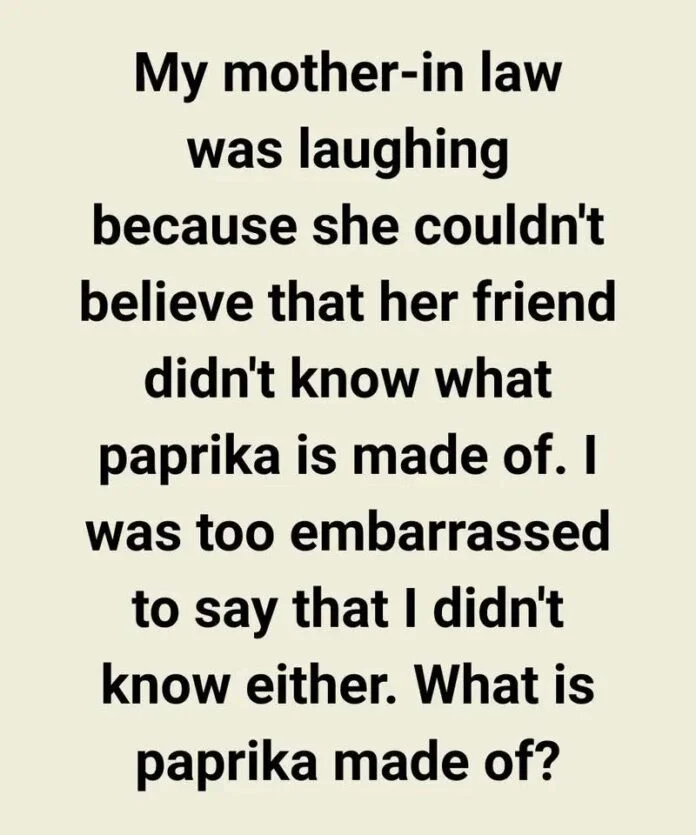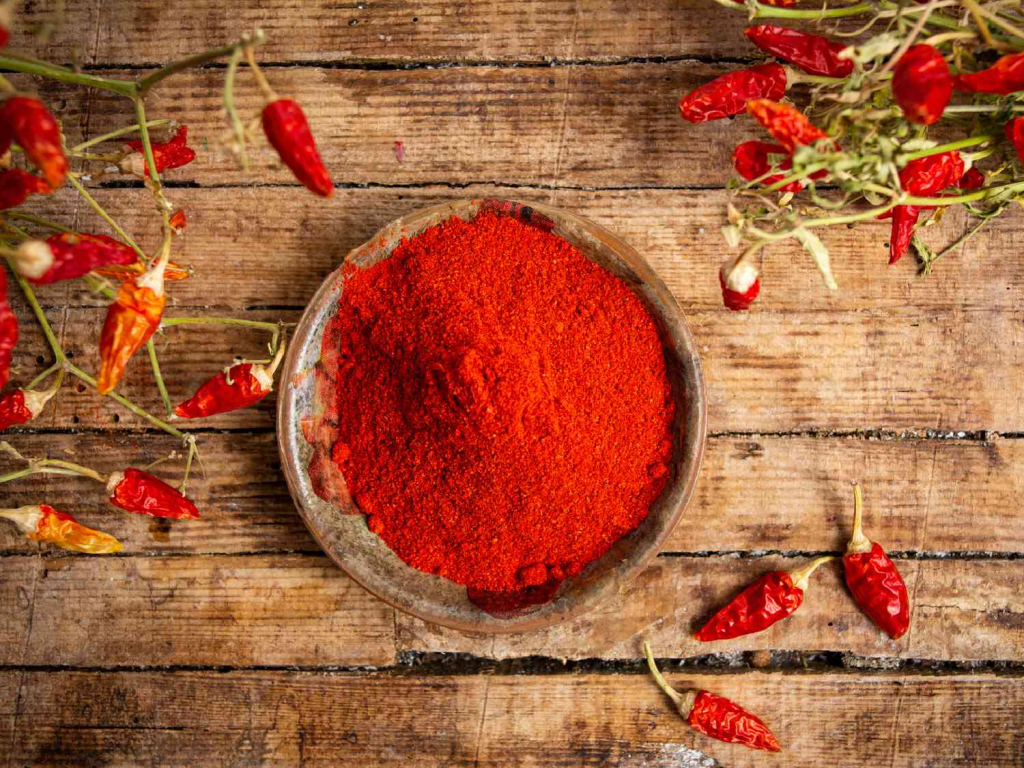Paprika. It’s one of those spices we all have tucked somewhere in the spice rack—bright red, slightly sweet, and perfect for adding a splash of color to deviled eggs or a cozy stew. But here’s the thing: most people don’t actually know what paprika is.
It’s not just “red dust” or a random kitchen staple your grandma used with every casserole. And once you discover what it’s really made of (and what it can do for your body), you might never look at that little bottle the same way again.
Let’s uncover the surprisingly rich—and slightly hilarious—story behind paprika, from its peppery roots to its powerful health perks.

So… What Is Paprika, Really?
Let’s start with the basics. That familiar red powder in your spice jar? It’s made from dried and ground red peppers. Yes, peppers. The same kind you might slice up for a stir-fry or stuff with rice and cheese.
Paprika comes from varieties of the Capsicum annuum family, which includes both sweet bell peppers and spicier chili peppers. The specific type used depends on the flavor profile a producer is going for—some are mild, some smoky, and others have a serious kick.
So, that colorful dash you’re adding to your eggs? It’s basically powdered pepper. And somehow, most of us didn’t realize that.
Video: What is Paprika Actually Made Of? | Food Unwrapped
The Hilarious Discovery That Sparked This Article
Here’s the moment that sparked the deep dive: a conversation between my mother-in-law and her friend, a sweet woman in her 70s who’s been cooking with paprika her whole life.
She had just learned—for the first time—that paprika came from peppers. Her reaction? Pure, wide-eyed disbelief.
“I thought it was just paprika,” she said, stunned and giggling.
That little moment of realization led to a full afternoon of laughter, talking about other common kitchen ingredients we didn’t fully understand. It was one of those small moments that remind you: learning never really ends—and sometimes, the basics are what surprise us most.
From Europe to Your Pantry: A Brief History of Paprika

Paprika has roots in Central and South America, where peppers were first cultivated. Spanish and Portuguese explorers brought peppers back to Europe in the 16th century, and over time, they made their way into the cuisines of Hungary and Spain, two countries that would become famous for producing paprika.
Hungarian paprika, in particular, is a big deal. In Hungary, paprika isn’t just a seasoning—it’s a cultural treasure. There are multiple grades, from sweet to hot, and the flavor can vary depending on whether the seeds or stems are included in the grind.
Spain gave us smoked paprika, or pimentón, which is dried over wood fires to create a deep, smoky flavor that transforms dishes like paella or chorizo.
Paprika Isn’t Just Pretty — It’s Surprisingly Healthy
Video: The Secret Ingredient That Makes Paprika Spicy | Food Unwrapped
Think paprika is just about color? Think again. This spice might be sitting quietly in your cupboard, but it’s working overtime when it comes to nutrition.
Here’s what makes paprika a powerhouse:
- Loaded with Antioxidants: Paprika contains carotenoids, capsanthin, and flavonoids, which help neutralize harmful free radicals in your body. Translation? Fewer signs of aging and more support for your long-term health.
- Packed with Vitamin C: Believe it or not, paprika can have more vitamin C than some citrus fruits. That means better immunity, faster wound healing, and glowing skin.
- Contains Natural Pain Relief: Capsaicin, found in spicier types of paprika, has natural anti-inflammatory properties. It can even help with joint pain and arthritis symptoms.
- Supports Heart Health: Some studies suggest that paprika can help improve circulation, lower blood pressure, and support overall cardiovascular wellness.
So yeah, your spice rack just got a little more exciting.
Fun Facts You Probably Didn’t Know About Paprika

Let’s keep it light with a few unexpected (and awesome) paprika facts:
- Hungarian paprika comes in at least eight grades, from delicate and sweet to fierce and fiery.
- Smoked paprika gets its flavor from being dried over oak wood fires, giving it a distinct depth that’s hard to replicate.
- It’s a key ingredient in everything from BBQ rubs to goulash to deviled eggs.
- Paprika has been used to dye textiles naturally, thanks to its rich red pigment. (And if you’ve ever stained your fingers while cooking, you already know this.)
- In some cultures, paprika is sprinkled not just for flavor, but also for good luck during special meals.
The Spice That Teaches Us to Keep Asking Questions
What’s great about learning something so simple—like the fact that paprika comes from peppers—is that it reminds us to stay curious. The kitchen isn’t just a place to cook. It’s a place to learn, to laugh, and to rediscover the ordinary.
That tiny bottle of red powder? It’s not just for garnishing potatoes. It’s a history lesson. A health booster. A cultural bridge. And maybe, just maybe, a reminder that we never know everything—even about the things we use every day.
Conclusion: From Laughter to Learning, Paprika Has It All

So the next time you reach for paprika, take a second to appreciate it. It’s not just a pretty dash of color. It’s dried peppers—packed with antioxidants, bursting with history, and flavored with a healthy dose of surprise.
And if you happen to tell someone that it comes from peppers, and they look at you like you’re joking?
Well, now you’ve got a story to share—and a reason to smile at something as simple as a spice. Because sometimes, the biggest flavor comes from the smallest discoveries


